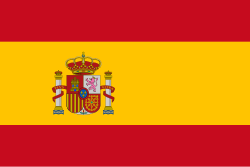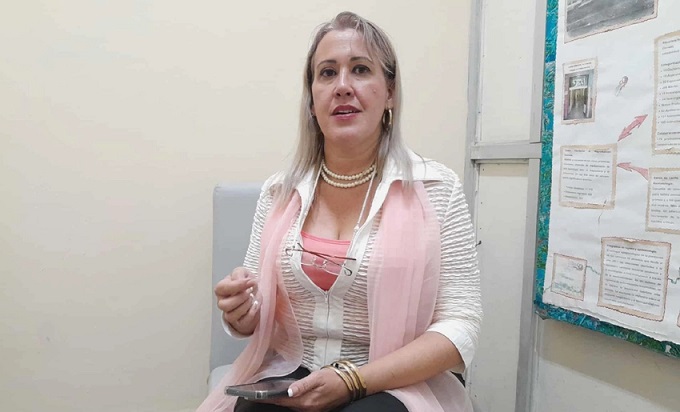The common denominator in the current epidemiological scenario in Holguin province that is characterized by recurring episodes of fever, severe joint and headache pain, gastrointestinal discomfort, and even respiratory symptoms that have left more than one person bedridden for several days.
To put it in good Cuban, seems to be one: the Aedes aegypti mosquito. Given the public interest in the behavior of arboviruses in this northeastern territory. As well as the main actions being undertaken, Dr. Geanela Cruz Ávila, Director of the Provincial Center for Hygiene, Epidemiology, and Microbiology (CPHEM), shares her statements.
It is well known that at this time of year, after a period of intense drought, the appearance of necessary rain and environmental conditions favor the proliferation of the dangerous vector that causes dengue, chikungunya, Zika, and yellow fever.
What are the main features that define the current hygienic-epidemiological situation in the province of Holguin?
“Today, there is no municipality with proven active transmission of arboviruses. Although there are cases in most of our municipalities, such as Holguin, Moa, Mayari, Gibara, Rafael Freyre, Baguanos, Cueto, and Urbano Noris, and Calixto Garcia, Antilla, Cacocum, Sagua de Tanamo, Banes, and Frank Pais, identified as high-risk areas. Historically, this time of year has seen an increase in arbovirus transmisión. In addition to the environmental risks that constitute a problem in our province.”
What arboviruses have been identified and are currently circulating?
“It has been confirmed that dengue serotype 4 is circulating in our province. The presence of chikungunya was confirmed in the municipality of Cacocum. Specifically in the town of Cristino Naranjo. The remaining surveillance data so far have not found any positive cases of oropouche. However, I reiterate that there is a risk of these arboviruses emerging and of localized transmission in some areas.”
What diagnostic tests are performed to identify arboviruses?
“To suspect an arbovirus, the first thing to consider is the clinical picture. All people with a nonspecific fever syndrome may have an arbovirus. From there, we would have to begin a differential diagnosis among all the infectious causes that produce fever. For example, if it were a nonspecific fever syndrome accompanied by muscle and joint pain, headache, retroocular pain, general malaise. Which may include abdominal pain, nausea, and taste disturbances, doctors might suspect a case of dengue.
“Chikungunya has a particular characteristic, given by joint inflammation and inflammation, and difficulty moving. Also which are interpreted as arthritis. In oropouche, the fever is slightly shorter, generally with gastrointestinal involvement, meaning vomiting and diarrhea, and a more sudden onset of headache. The fever is somewhat more controlled over time. But a relapse may occur around seven days later.
“For laboratory confirmation, we use serological studies, commonly known by the population as monoserum, which is the immunoglobulin diagnosis, and also PCR testing in the case of chikungunya and oropharynx. These are performed on medical advice, along with the epidemiological analysis of suspected cases, throughout the province.”
How are suspected cases of arboviruses processed and collected?
“The health system guarantees serological surveillance for the confirmation of all arboviruses. We have serological surveillance in the municipalities. As prescribed by the attending physician, in conjunction with epidemiology. Prior to a technical analysis of each case based on clinical suspicion and the location of the focal area in each territory, monoserum testing is performed in the province.
“These samples are also sent for quality control to the Pedro Kourí Institute of Tropical Medicine (IPK), and PCR testing is also performed for the diagnosis and confirmation of all arboviruses. Thanks to these sample analyses, we have confirmed dengue type 4 and chikungunya. Samples have been sent from all municipalities for surveillance.
What human and material resources are available to care for confirmed cases?
“The main resource we have is human resources. Today, our doctors and nurses are trained at all levels of care to confront, control, and treat these arboviruses. From the family doctor’s office, our medical students, physicians, residents, and even specialists have received all the necessary training to care for our population in the event that a patient arrives. With an unspecified fever syndrome or with suspicion of these arboviruses.
“Furthermore, our health institutions have the resources to treat these cases. We urge the population to visit our institutions promptly to prevent complications from these diseases that could put their lives at risk. The first step is to visit the institution promptly.”
How are phenomena such as drought, the increase in micro-landfills, and rainfall interrelated and influence the current hygienic-epidemiological situation?
“Environmental factors have a direct influence on the proliferation of Aedes aegypti and vectors in general. After the intense drought and with the need to store water in tanks in our homes. We urge our population to keep their water storage tanks covered, using the resources available. Likewise, when tanks are damaged, find scraps of cloth or nylon to cover all the holes. We must find a way to properly cover rooftop and elevated tanks.
“Another issue is controlling the autofocus. We emphasize that 70 percent of the focus is inside homes. In those poorly covered tanks and alternative tanks, in spiritual vessels, in abandoned tanks in our yards. We insist on community participation, cleaning yards, draining stagnant water, and eliminating weeds.
The responsibilities of the institutions and organizations that must ensure cleanliness and proper sanitation are also extremely important. We strongly emphasize citizen discipline because sometimes the garbage dump is left behind. And people throw waste outside. Waste is also dumped on riverbanks, which is evidence of social indiscipline.
“In the case of community participation, we place great importance on supporting vulnerable families. That elderly person who lives alone and is unable to properly self-isolate, and the community group can support them so their homes are in better condition. The key is cleanup and preventative activities.”
Where are the main outbreak control actions focused?
“The plan to combat arboviruses remains active throughout the year. It has nine components. Among these is the direction and control component, where community groups are activated under the direction of the government at all levels. From the community councils, their presidents, and mayors to the provincial level with the governor. Where temporary groups are developed to monitor compliance with the indicated measures.
“It includes an epidemiological surveillance and analysis component, where a daily analysis is conducted of the behavior of nonspecific febrile syndromes, new cases, and the geographic distribution of locations and movement of febrile síndromes. As well as suspected cases of dengue, in order to take action. To the extent that this timely alert is issued.
“Also notable is the medical assistance component, where active screening plays a fundamental role. We urge our population not to stay home and, when the investigators visit, not to hide their symptoms. Because this is the way to understand what is happening in the homes and to conduct appropriate and personalized follow-up for each person with suspected arbovirus infection.
“In the surveillance and vector control component, workers from the Aedes aegypti control and eradication campaign continue to work on surveillance and focal treatment. I clarify that adulticidal treatment or fumigation is carried out in the case of patients with nonspecific fever syndrome or suspected intradomiciliary dengue in that home and the surrounding homes.
If there were transmission in a block, and now in the case of Cacocum, with the emergence of chikungunya. The decision was made to carry out extradomiciliary adulticidal treatment, which covers the streets and the surrounding areas of homes.
Perhaps due to the dynamism of modern life or the length of the mosquito’s presence in the environment, our vigilance in the fight against its elimination has been lowered. Consequently, Aedes mosquitoes take advantage of human gaps to plant their flag and perpetuate their species. Which, in addition to being very annoying, cause so much harm to our health these days.
- The Lucía Hospital, 27 Years as a Reward for the People of Holguin - 28 de November de 2025
- Alert in Holguin Due to Risk of Leptospirosis Infection - 27 de November de 2025
- Holguin Commemorates the Execution of Eight Medical Students - 27 de November de 2025

